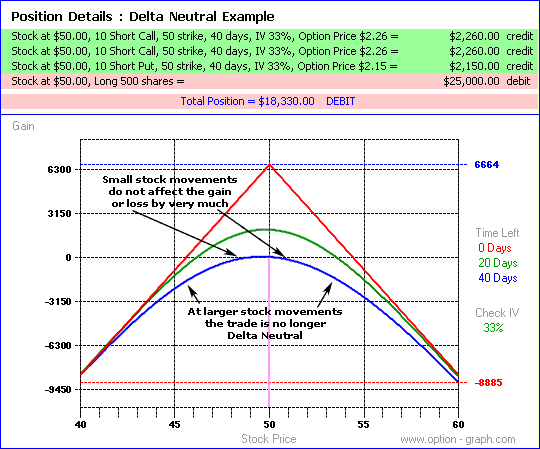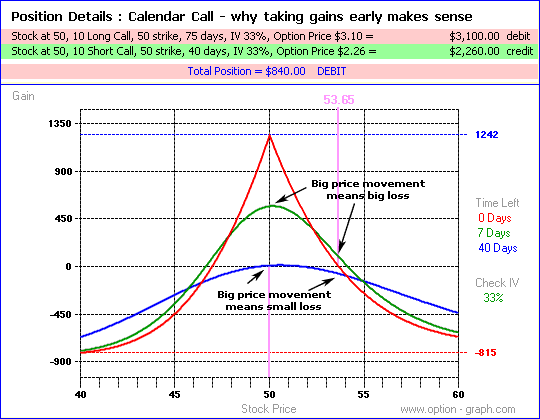Options Trading Strategies Understanding Position Delta
Post on: 17 Апрель, 2015 No Comment

Measures the rate of change of delta.
Figure 1: The four dimensions of risk — AKA, the Greeks.
Figure 2 contains some hypothetical values for S&P 500 call options that are at, out and in the money (in all these cases, we will be using long options). Call delta values range from 0 to 1.0, while put delta values range from 0 to –1.0. As you can see, the at-the-money call option (strike price at 900) in figure 2 has a 0.5 delta, while the out-of-the-money (strike price at 950) call option has a 0.25 delta, and the in-the-money (strike at 850) has a delta value of 0.75. (To learn more about these four risk measures, read Using The Greeks To Understand Options .)
Note: We are assuming that the underlying S&P 500 is trading at 900
At this point, you might be wondering what these delta values are telling you. Let’s use the following example to help illustrate the concept of simple delta and the meaning of these values. If an S&P 500 call option has a delta of 0.5 (for a near or at-the-money option), a one-point move (which is worth $250) of the underlying futures contract would produce a 0.5 (or 50%) change (worth $125) in the price of the call option. A delta value of 0.5, therefore, tells you that for every $250 change in value of the underlying futures, the option changes in value by about $125. If you were long this call option and the S&P 500 futures move up by one point, your call option would gain approximately $125 in value, assuming no other variables change in the short run. We say approximately because as the underlying moves, delta will change as well.
Be aware that as the option gets further in the money, delta approaches 1.00 on a call and –1.00 on a put. At these extremes there is a near or actual one-for-one relationship between changes in the price of the underlying and subsequent changes in the option price. In effect, at delta values of –1.00 and 1.00, the option mirrors the underlying in terms of price changes.

Also keep in mind that this simple example assumes no change in other variables like the following:
- Delta tends to increase as you get closer to expiration for near or at-the-money options.
- Delta is not a constant, a concept related to gamma (another risk measurement), which is a measure of the rate of change of delta given a move by the underlying.
- Delta is subject to change given changes in implied volatility .
Long Vs. Short Options and Delta
As a transition into looking at position delta, let’s first look at how short and long positions change the picture somewhat. First, the negative and positive signs for values of delta mentioned above do not tell the full story. As indicated in figure 3 below, if you are long a call or a put (that is, you purchased them to open these positions), then the put will be delta negative and the call delta positive; however, our actual position will determine the delta of the option as it appears in our portfolio. Note how the signs are reversed for short put and short call.














